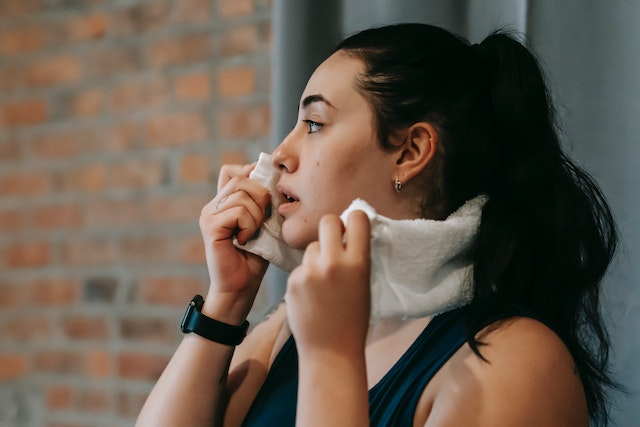Hot flashes are a common symptom experienced by many individuals, predominantly women, during menopause or other hormonal imbalances. Despite their prevalence, hot flashes can be a perplexing and uncomfortable experience, leaving individuals searching for answers about what they are and feel like. Here, we will explore the phenomenon of hot flashes, diving into their symptoms, triggers, and the subjective experience they entail.
What Are Hot Flashes?
Hot flashes, also known as vasomotor symptoms, are sudden sensations of intense warmth that can spread throughout the body, particularly in the face, neck, and chest. While they are most commonly associated with menopause, they can also happen due to other factors such as hormonal imbalances, certain medications, and medical conditions. The exact cause of hot flashes still needs to be fully understood. Still, they are believed to be triggered by changes in the hypothalamus, the part of the brain responsible for regulating body temperature.
The Experience of a Hot Flash
Hot flashes can differ in intensity and duration from person to person. Some individuals may experience mild, fleeting episodes, while others may face more severe and prolonged episodes. The following is a subjective account of what a hot flash may feel like:
- Heat and Sweating: A hot flash often begins with a sudden wave of heat that engulfs the body, making the affected person feel intensely warm. The sensation can be akin to standing near a roaring fire or being in a sweltering sauna. This surge of heat can be accompanied by profuse sweating, causing the person to feel damp and clammy.
- Rapid Heartbeat and Flushed Skin: As the body temperature rises, the heart rate may increase, leading to a rapid or pounding heartbeat. Simultaneously, the skin may turn red or flushed, particularly on the face, neck, and chest. This redness is caused by the dilation of blood vessels near the skin’s surface.
- Chills and Shivering: Following the intense heat, some individuals may experience a sudden chill or shiver as the body tries to regulate its temperature. This fluctuation between extreme warmth and a sudden drop in body temperature can be disconcerting.
- Anxiety and Discomfort: Hot flashes can accompany anxiety, unease, or a general sense of discomfort. Hot flashes’ sudden onset and unpredictability can be distressing, especially when they occur in public settings or interfere with daily activities.
Triggers and Coping Strategies
Various factors, including hormonal changes, stress, certain foods and drinks, alcohol, caffeine, spicy foods, and warm environments, can trigger hot flashes. Identifying personal triggers can help manage and minimize the frequency and intensity of hot flashes.
- Lifestyle Modifications: Making lifestyle adjustments such as dressing in layers, using fans or air conditioning, and avoiding triggers like caffeine and alcohol may help decrease the occurrence and severity of hot flashes. Relaxation procedures such as deep breathing exercises, yoga, or meditation can contribute to overall well-being and help manage the symptoms.
- Hormone Therapy: For some individuals, hormone replacement therapy (HRT) may be recommended to alleviate the symptoms of hot flashes. HRT involves using estrogen or a combination of estrogen and progesterone to rebalance hormone levels in the body. However, discussing HRT’s potential risks and benefits with a healthcare professional is essential.
- Alternative Approaches: Various alternative therapies, including herbal supplements like acupuncture, black cohosh, evening primrose oil, and mindfulness-based practices, have shown promise in reducing the frequency and intensity of hot flashes for some individuals. However, consulting with a healthcare provider before trying alternative treatments is crucial.
Hot flashes can be a distressing and uncomfortable experience, impacting the quality of life for many individuals. Understanding what a hot flash feels like is crucial in managing and relieving this common symptom. While the subjective experience may vary, the sudden surge of heat, sweating, rapid heartbeat, flushed skin, and associated discomfort are characteristic elements of a hot flash. By identifying triggers, adopting lifestyle modifications, and exploring appropriate treatment options, individuals experiencing hot flashes can find strategies to alleviate their symptoms and regain control over their well-being during this transitional phase.







